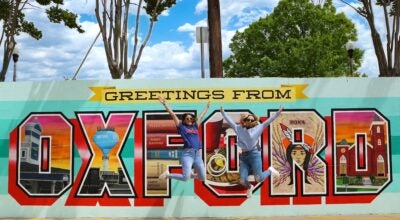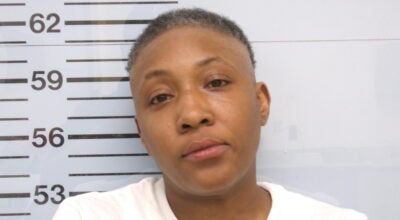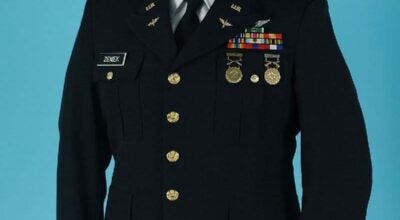What is Charlottesville, Virginia like?
Published 3:52 pm Thursday, August 17, 2017
CHARLOTTESVILLE, Va. (AP) — The white nationalists behind last weekend’s violent rally found an appealing target in the historic town where Thomas Jefferson founded a university and an outspoken, progressive mayor declared his city the “capital of the resistance” to President Donald Trump.
For more than a year, the Charlottesville government has also been engaged in contentious public soul searching over its Confederate monuments, a process that led to the decision to remove a statue of Gen. Robert E. Lee. All those factors made this community a symbolically powerful backdrop for what’s considered the largest white nationalist gathering in at least a decade.
“We are a progressive, tolerant city. We are also a Southern city,” Mayor Mike Signer said. About a year and a half ago, Charlottesville “decided to launch on the difficult but essential work of finally telling the truth about race. That made us a target for tons of people who don’t want to change the narrative.”
On the eve of Saturday’s rally, hundreds of white men marched through the University of Virginia campus, holding torches and chanting racist and anti-Semitic slogans. The next morning, many looked like they were dressed for war as they made their way to Emancipation Park.
They clashed with counter-protesters in a stunning display of violence before authorities forced the crowd to disperse. Later, a car plowed into a crowd of demonstrators, killing 32-year-old Heather Heyer and injuring 19 others.
With a population of around 47,000, Charlottesville is a progressive island in a conservative part of Virginia.
The funky, cosmopolitan town is nestled in the rolling foothills of the Blue Ridge Mountains. It’s known for being home to Jefferson’s plantation, Monticello, and the place where the Dave Matthews Band got its start.
The heart of its downtown is an open-air pedestrian mall lined with restaurants, bars and quirky boutiques. Tourists flock to Charlottesville not only for the history and culture but also to visit the wineries that dot the countryside just outside of town.
Charlottesville was easily overwhelmed by the numbers that showed up Saturday, said Ed Ayers, a leading Civil War scholar who taught at UVA for decades before moving to Richmond.
Despite Virginia’s bloody part in the Civil War, Ayers said, the Lee statue does not have a significant historical connection to Charlottesville. The city “did not play a central role in the war at all, he explained, and the statue was not erected until the 1920s, when Jim Crow laws were eroding the rights of black citizens.
Charlottesville was just “a very clear symbol they could go to and have a protest,” Ayers said.
The city is proud of Jefferson’s university, a prestigious school with graduates that include prominent figures such as Robert F. Kennedy. But UVA is also a school largely built by slaves and where professors had ideological connections to the resistance movement that followed the Brown vs. Board of Education school desegregation decision.
The university did not admit black students until 1950. Last year, figures provided by the school show only 6 percent of students were black.
White nationalist leader Richard Spencer — a UVA grad who was one of the most high-profile speakers lined up for the rally — echoed Ayers’ perspective. He said that the Confederate monuments are a metaphor for something “much bigger,” referring to “white dispossession and the de-legitimization of white people in this country and around the world.”
Saturday was not Spencer’s first demonstration in Charlottesville. In May, he was among another torch-wielding group that rallied around the statue at night, chanting, “You will not replace us.” Later that month, local right-wing blogger and UVA graduate Jason Kessler applied for the permit for Saturday’s event.
Then, in July, about 50 Ku Klux Klan members rallied at the statue, where they were met by more than 1,000 protesters. That, too, made national news.
Oren Segal, director of Anti-Defamation League’s Center on Extremism, said hate groups are eager to exploit media attention.
“When they saw a built-in opportunity to build off the other two rallies, it was clear they decided, ‘This is the place. We’re going to get more attention here,'” he said.
Virginia’s closely watched governor’s race, one of only two in the nation this year, also helped draw attention.
Republican Corey Stewart successfully made the statue’s proposed removal a key talking point in the GOP primary, which he almost won despite being an underdog.
Stewart, a one-time state chairman of Trump’s campaign, made several campaign stops in Charlottesville. At least one public appearance was with Kessler.
Katie Straight, who stood outside the downtown theater Wednesday where a memorial service for Heyer took place, agreed that the city’s “democratic” discussion about what to do with the statues had contributed to the scope of what happened Saturday.
“I also think that you have a group of angry people in this country who are looking for a place to physically terrorize those who might challenge their legacy of power,” Straight said. “And Charlottesville, in this historic moment, happens to be that place. I hope and pray it’s the last place, but I don’t think it will be.”





